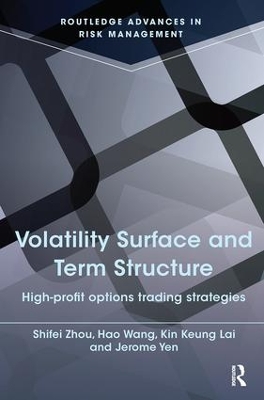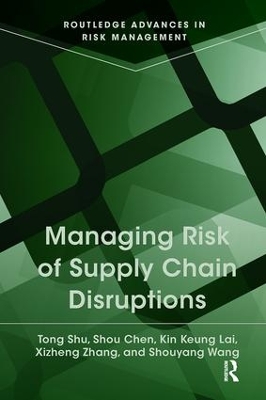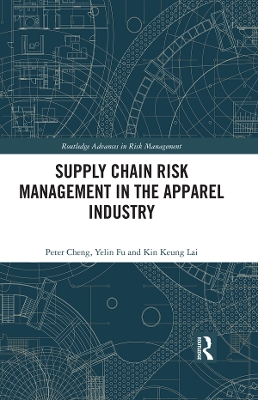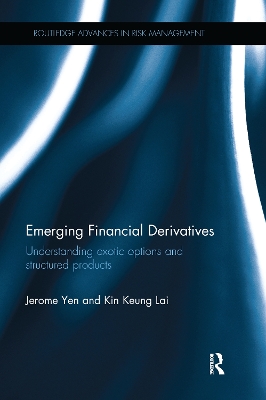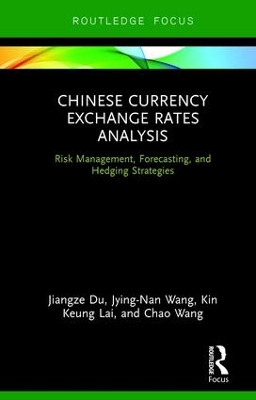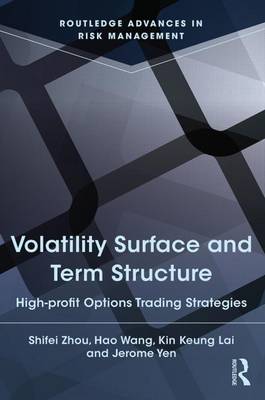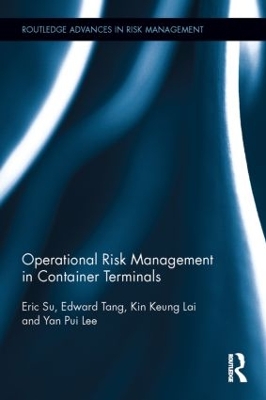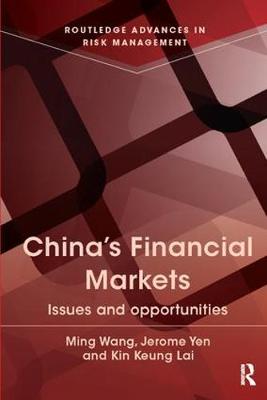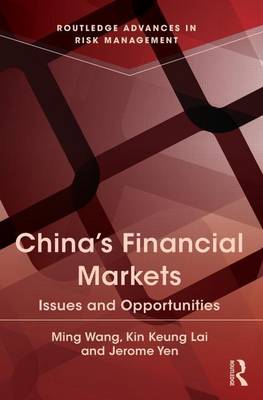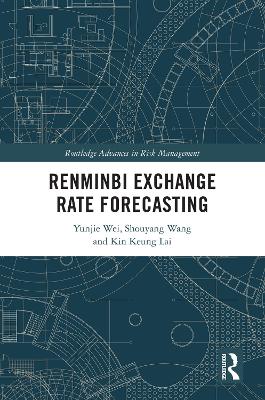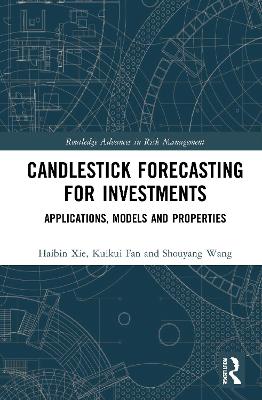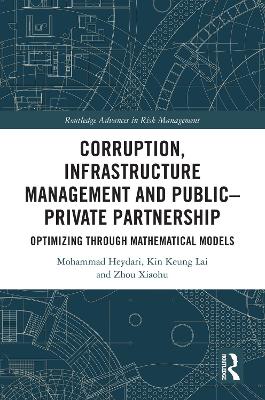Routledge Advances in Risk Management
18 total works
Volatility Surface and Term Structure
by Kin Keung Lai, Jerome Yen, Shifei Zhou, and Hao Wang
This book provides different financial models based on options to predict underlying asset price and design the risk hedging strategies. Authors of the book have made theoretical innovation to these models to enable the models to be applicable to real market. The book also introduces risk management and hedging strategies based on different criterions. These strategies provide practical guide for real option trading.
This book studies the classical stochastic volatility and deterministic volatility models. For the former, the classical Heston model is integrated with volatility term structure. The correlation of Heston model is considered to be variable. For the latter, the local volatility model is improved from experience of financial practice. The improved local volatility surface is then used for price forecasting. VaR and CVaR are employed as standard criterions for risk management. The options trading strategies are also designed combining different types of options and they have been proven to be profitable in real market.
This book is a combination of theory and practice. Users will find the applications of these financial models in real market to be effective and efficient.
Managing Risk of Supply Chain Disruptions
by Tong Shu, Shou Chen, Kin Keung Lai, Xizheng Zhang, and Shouyang Wang
This book discusses important issues related to managing supply chain disruption risks from various perspectives. It explores the essence and principles relating to managing these risks and provides the framework and multi-goal model groups for managing such risks.
The book also discusses research development of managing supply chain disruptive risks, supply chain risk conduction and loss assessment methods of supply chain disruptive events. It also includes the consideration of supply chain coordinating models in the cases of demand and supply disruption risks. It also deals on the subject of managing models of supply chain disruption risks by looking at manufacturers and responding decision methods oriented towards demand in disruption and coordination. It also summarizes the relevant findings and provides future research questions and orientations.
The book will contributes significantly to the growing body of knowledge concerning the theory of managing supply chains.
Managing Currency Options in Financial Institutions
by Kin Keung Lai and Yat Fai Lam
The book introduces how we can manage currency options with the Vanna-Volga method. It describes the underlying theories and applications of the Vanna-Volga method in managing currency options of a financial institution, conforming to the Basel III regulatory requirements which demand a high consistency between the valuation and market risk calculation methodologies of financial instruments.
The book illustrates with technical details to shed understanding on the major applications, including valuation, volatility recovery, dynamic portfolio replication and value-at-risk. Those who study finance, risk management, quantitative finance or similar areas, as well as practitioners who wish to learn how to valuate, hedge and manage the market risk of currency options with more advanced models and techniques will find the book of invaluable use.
Supply Chain Risk Management in the Apparel Industry
by Kin Keung Lai and Peter Cheng
Apparel is one of the oldest and largest export industries in the world. It is also one of the most global industries because most nations produce for the international textile and apparel market. The changing global landscape drives cost volatility, regulatory risk and change in consumer preference. In today’s retail landscape, media and advocacy groups have focussed attention on social and environmental issues, as well as new regulatory requirements and stricter legislations. Understanding and managing any risk within the supply chain, particularly ethical and responsible sourcing, has become increasingly critical.
This book first gives a systematic introduction to the evolution of SCRM through literature review and discusses the importance of SCRM in the apparel industry. Second, it describes the life cycle of the apparel supply chain and defines the different roles of the value chain in the apparel industry. Thirdly, it identifies the risk factors in the Apparel Life Cycle and analyses the risk sources and consequences and finally, extends the importance of selection of the suppliers and develops a supplier selection model and SCRM strategies solution by data analysis and case studies.
Risk Management in Supply Chains
by Mohammad Heydari, Kin Keung Lai, and Zhou Xiaohu
The book examines a relatively unexplored issue in supply chain risk management, which is how long companies specifically take to respond to catastrophic events of low probability but high impact. The book also looks at why such supply chain disruptions are unavoidable, and consequently, all complex supply chains are inherently at risk.
The book illustrates how companies can respond to supply chain disruptions with faster responses and in shorter lead-times to reduce impact. In reducing total response time, designing solutions, and deploying a recovery plan sooner after a disruption in anticipation of such events, companies reduce the impact of disruption risk. The book also explores the basics of multiple-criteria decision-making (MCDM) and analytic hierarchy process (AHP), and how they contribute to both the quality of the financial economic decision-making process and the quality of the resulting decisions. The book illustrates through cases in the construction sector how this industry has become more complex and riskier due to the diverse nature of activities among global companies.
Exotic options and structured products are two of the most popular financial products over the past ten years and will soon become very important to the emerging markets, especially China. This book first discusses the products' recent development in the world and provides comprehensive overview of the major products. The book also discusses the risks of issuing and buying such products as well as the techniques to price them and to assess the risks. Volatility is the most important factor in determining the return and risk. Therefore, significant part of the book's content discusses how we can measure the volatility by using local and stochastic volatility models — Heston Model and Dupire Model, the volatility surface, the term structure of volatility, variance swaps, and breakeven volatility.
The book introduces a set of dimensions which can be used to describe structured products to help readers to classify them. It also describes the more commonly traded exotic options with details. The book discusses key features of each exotic option which can be used to develop structured products and covers their pricing models and when to issue such products that contain such exotic options. This book contains several case studies about how to use the models or techniques to price and hedge risks. These case analyses are illuminating.
Chinese Currency Exchange Rates Analysis
by Jiangze Du, Jying-Nan Wang, Kin Keung Lai, and Chao Wang
This book provides an overview of Chinese RMB exchange markets and its risk management strategies. The view that RMB is playing an increasingly international role has been widely accepted by practitioners as well as scholars worldwide. Moreover, the Chinese government is opening the control of RMB exchange market step by step. However, some related topics are under heated debate, such as how to manage and warn of the currency crisis, what the trend of RMB exchange rate in the future is, and how to hedge the exchange risk in the process of RMB internationalization. In this book, we will give distinct answers to the above questions.
Operational Risk Management in Container Terminals
by Eric Su, Edward Tang, Kin Keung Lai, and Yan Pui Lee
This book provides an overview of the operation of container terminals and the associated risks with such operations. These risks are often ignored or not properly investigated by both scholars and practitioners.
Operational Risk Management in Container Terminals explores and discusses the decision rationales and the consequences for these operational risks handling process, with in-depth investigation on the container terminals in the Asia-Pacific region. The topics covered include the history and development of the container terminals, the operation of the terminals and risk incurred, the risk-management theories and concepts, rationales and consequences of the risk decisions in the container terminal operations, common practices and recommendations on terminal operational risk handling.
Forecasting Air Travel Demand
by Yafei Zheng, Kin Keung Lai, and Shouyang Wang
This book provides an updated, concise summary of forecasting air travel demand methodology. It looks at air travel demand forecasting research and attempts to outline the whole intellectual landscape of demand forecasting. It helps readers to understand the basic idea of TEI@I methodology used in forecasting air travel demand and how it is used in developing air travel demand forecasting methods. The book also discusses what to do when facing different forecasting problems making it a useful reference for business practitioners in the industry.
Information Spillover Effect and Autoregressive Conditional Duration Models
by Xiangli Liu, Yanhui Liu, Yongmiao Hong, and Shouyang Wang
This book studies the information spillover among financial markets and explores the intraday effect and ACD models with high frequency data. This book also contributes theoretically by providing a new statistical methodology with comparative advantages for analyzing comovements between two time series. It explores this new method by testing the information spillover between the Chinese stock market and the international market, futures market and spot market. Using the high frequency data, this book investigates the intraday effect and examines which type of ACD model is particularly suited in capturing financial duration dynamics.
The book will be of invaluable use to scholars and graduate students interested in comovements among different financial markets and financial market microstructure and to investors and regulation departments looking to improve their risk management.
This book provides an overview of China’s financial markets and their latest developments. The book explores and discusses the difficulties in building modern financial markets that are compatible with an increasingly complicated market economy and examines the various strategies to reform China’s financial system. It covers a range of topics: China’s financial structure, financial regulation, financial repression and liberalization, monetary policy and the People's Bank of China, banking reforms, exchange rate policy, capital control and capital-account liberalization, and development of the stock markets.
The book provides a basic understanding of the current issues related to the development of China’s financial markets. It enhances knowledge of China’s regulatory framework which has helped to shape China’s financial landscape. It provides specific, useful knowledge about investment in China, such as, market sense, to identify the investment opportunities in various asset classes.
Green Transportation and Energy Consumption in China
by Ying Yang, Kin Keung Lai, and Shouyang Wang
This book provides insights into China’s energy consumption and pollution as well as its energy saving policies. It explores energy saving ways and argues for an energy consumption revolution, which includes technologies to improve transportation resource efficiency, modification of existing transportation infrastructure and structure.
This book uses various analytical models to study the relationships within the transportation system. It also includes comparative analysis of China, Japan, the US and developing countries on traffic demand and transportation energy consumption. This book highlights the urgent need to review China’s current transportation policies in order to secure a breakthrough in energy saving and emissions reduction.
China\'s Financial Markets: Issues and Opportunities: Issues and Opportunities
by Ming Wang, Kin Keung Lai, and Jerome Yen
Renminbi Exchange Rate Forecasting
by Yunjie Wei, Shouyang Wang, and Kin Keung Lai
With the internationalization of Renminbi (RMB), the gradual liberalization of China's capital account and the recent reform of the RMB pricing mechanism, the RMB exchange rate has been volatile. This book examines how we can forecast exchange rate reliably. It explains how we can do so through a new methodology for exchange rate forecasting. The book also analyzes the dynamic relationship between exchange rate and the exchange rate data decomposition and integration, the domestic economic situation, the international economic situation and the public’s expectations and how these interactions would affect the exchange rate.
The book also explains why this comprehensive integrated approach is the best model for optimizing accuracy in exchange rate forecasting.
Candlestick Forecasting for Investments
by Haibin Xie, Kuikui Fan, and Shouyang Wang
Candlestick charts are often used in speculative markets to describe and forecast asset price movements. This book is the first of its kind to investigate candlestick charts and their statistical properties. It provides an empirical evaluation of candlestick forecasting. The book proposes a novel technique to obtain the statistical properties of candlestick charts. The technique, which is known as the range decomposition technique, shows how security price is approximately logged into two ranges, i.e. technical range and Parkinson range.
Through decomposition-based modeling techniques and empirical datasets, the book investigates the power of, and establishes the statistical foundation of, candlestick forecasting.
Corruption, Infrastructure Management and Public–Private Partnership
by Mohammad Heydari, Kin Keung Lai, and Zhou Xiaohu
Public–Private Partnerships (PPP or 3Ps) allow the public sector to seek alternative funding and expertise from the private sector during procurement processes. Such partnerships, if executed with due diligence, often benefit the public immensely. Unfortunately, Public–Private Partnerships can be vulnerable to corruption. This book looks at what measures we can put in place to check corruption during procurement and what good governance strategies the public sector can adopt to improve the performance of 3Ps.
The book applies mathematical models to analyze 3Ps. It uses game theory to study the interaction and dynamics between the stakeholders and suggests strategies to reduce corruption risks in various 3Ps stages. The authors explain through game theory-based simulation how governments can adopt a evaluating process at the start of each procurement to weed out undesirable private partners and why the government should take a more proactive approach.
Using a methodological framework rooted in mathematical models to illustrate how we can combat institutional corruption, this book is a helpful reference for anyone interested in public policymaking and public infrastructure management.
Strategies for Supply Chain Risk Management
by Li Yi, Ju'e Guo, and Kin Keung Lai
Examining the negative consequences that arise from supply chain risks, this book systematically explores firms’ responses to these risks in different situations. In particular, it focuses on sourcing strategies of firms under supply chain risks and the different mitigation tools they use, such as supplier development and multisourcing.
Supply chains have expanded extensively because many firms try to take advantage of outsourcing of their raw materials and critical components. Though firms can reap significant benefits due to the widespread use of outsourcing, they have to deal with increasing supply chain risks. In general, supply chain risks are various and may be originated from natural disasters, labor strikes, fires, and so on. These risk incidents can cause serious damage to firms’ profit performance.
The analysis and insights from this book can be utilized by firms to alleviate the impact of supply chain risks in the sourcing process. It will also be of interest to researchers and students studying supply chain management.
